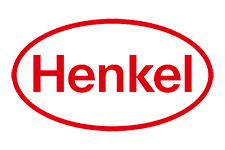Henkel 2023 Sustainability Report: Regenerative Planet
We strive to achieve a circular economy, a climate-neutral future and the regeneration of nature.

Originally published in the Henkel 2023 Sustainability Report
We are on a journey toward an environmental transformation of our business model. To achieve this ambition, we intend to transform our processes, products and use of raw materials in the direction of a resource-efficient, climate-neutral future. We are focusing on climate change mitigation measures, a functional circular economy, and the protection of nature and biodiversity.
Climate
Climate change is one of the major global challenges of our time. We are committed to achieving the 1.5-degree target of the Paris Climate Agreement. The risks for society and for our company are significantly lower at a temperature increase of 1.5 degrees Celsius than at 2 degrees Celsius.
We consider climate change to be a factor that intensifies existing risks, but also offers numerous opportunities at the same time. Addressing climate change requires action by all key stakeholders, including policymakers, the private sector, communities and civil society. The CDP rating of A- for our climate commitment demonstrates the strength of our efforts to do our part to help find a solution. This is why we are part of the Alliance of CEO Climate Leaders, a network of business leaders from different industries and regions. This community, led by the World Economic Forum, is committed to accelerating decarbonization and expanding partnerships across global value chains.
Henkel has set science-based emissions reduction targets based on a 1.5-degree pathway for our Scope 1 and 2 targets. To underscore our commitment to being a leader in climate protection, we have included the attainment of our Scope 1 and 2 SBTi targets in the long-term incentive system for the Management Board and our top managers from 2023. We consider climate change and its impacts as part of our sustainability and risk management approach, and also across our entire value chain. It is relevant for us from two perspectives: One is with regard to the potential impact of our business activities on the global greenhouse gas balance, and the other is with regard to the potential impact of climate change on our business activities. We are striving to become a climateneutral company. This is also increasingly being referred to as a net-zero balance for a company’s business activities. This is based on the vision of ensuring that business activities do not contribute to further global warming.
Circular economy
Decoupling economic growth from the consumption of finite natural and fossil resources and developing a circular economy are key approaches to sustainable value creation and climate protection. Increasing the recycling of packaging and reducing waste are key focus areas.
Eliminating, reducing and – where this is not possible – recovering and recycling packaging materials, especially for our consumer goods, is the best way to minimize waste and the related negative environmental effects. Our goal is to reduce the amount of packaging material we use to a minimum without compromising the quality, performance or safety of our products. We also aim to provide consumers with all the information they need to safely use and properly dispose of products. With a few exceptions, today our packaging has been developed to provide the level of performance consumers expect, while using minimal resources. In addition, our packaging can be disposed of in existing collection and recycling systems.
Resource consumption can be reduced if materials are kept within the cycles of the economy for as long as possible. Our mission is to include materials from sustainable sources and to design packaging so that it can be reused as raw materials for new products in order to close the material loop. Our packaging developers collaborate with companies along the value chain, such as raw material manufacturers, packaging material manufacturers, waste disposal companies and recyclers, to implement the requirements for functional packaging.
In our Adhesive Technologies business unit, we also pursue the approach of using our high-quality, innovative packaging adhesives to support other companies in their implementation of a circular economy. To accomplish this, we are focusing on innovative solutions that facilitate the recycling of materials and also the separation of materials, so that products and product parts can be repaired, reused and refurbished.
Henkel is also pursuing a variety of approaches to implement closed-loop recycling in its own production processes. In this area, we emphasize the separate collection of all recyclable waste streams at our sites.
We continued to develop the underlying database in 2023 to improve the management of our packaging portfolio. We recorded packaging specifications in more detail in our master data, and improved data quality. Additional internal analysis and visualization tools were also introduced. These measures are part of our cross-functional and cross-business initiative to increase the transparency of sustainability data. We are also leveraging the expansion of digital solutions to support this initiative.
These new tools enable us to carry out various extended evaluations of our packaging footprint, for example on quantities purchased or sold, regionally or globally. This allows us to conduct advanced analyses for reporting and for meeting regulatory requirements in the specific markets in which we operate. Although we have updated the internal calculation basis, the previous year’s data remains comparable with this year’s footprint data. This also makes it easier to control details and use our findings in the strategic development of packaging to optimize our use of packaging. We continue to further develop our data quality and the use of digital tools.
Natural Resources
Growing consumption and resource scarcity due to an increasing global population and accelerated economic activity are putting more and more pressure on biodiversity and ecosystems. Henkel supports the conservation of nature and the protection of biodiversity.
According to a report published by IPBES (Intergovernmental SciencePolicy Platform on Biodiversity and Ecosystem Services), human activities are threatening nearly one million species with extinction. Conserving biodiversity is important to Henkel, as intact ecosystems and soil biodiversity are essential as a basis for sustainable agriculture and the use of raw materials in production. Healthy water ecosystems are also crucial to protecting biodiversity. However, the Earth’s water resources are not only unequally distributed. They are also threatened by climate change, as well as increasing pollution and overuse. In this context, we are keenly aware of the importance of using this resource responsibly. This is reflected in our sustainability strategy. Our 2021 stakeholder survey results showed that biodiversity is also becoming an increasingly important issue for our partners and other stakeholders.
Our sustainability strategy aims to protect and restore biodiversity – with a particular focus on forests, land and water. In addition to applying these principles to the activities at our own sites, we also promote the responsible management of raw materials and the use of ingredients based on renewable raw materials. In 2023, we worked with consulting company denkstatt to analyze and identify our impact, risks and dependencies in relation to biodiversity across our entire value chain. To do this, we determined the geographical location of our production sites and their proximity to important areas of biodiversity. We can use this analysis to develop comprehensive measures and programs that will contribute to the global overall mission of halting and reversing biodiversity loss by 2030.
At Henkel, water plays an important role along our value chain. We use water as a part of our production processes and as an ingredient in our products. Many of our products also require water during the use phase.
For this reason, reducing water usage during the production and use of our products is important for us. In order to identify suitable approaches for improvement, we have worked closely with various stakeholders. For example, we are investigating our impact on water along the value chain. This includes examining the water footprint of raw materials, our production processes and the consumption of water during the use of our products, as well as the treatment of wastewater.

